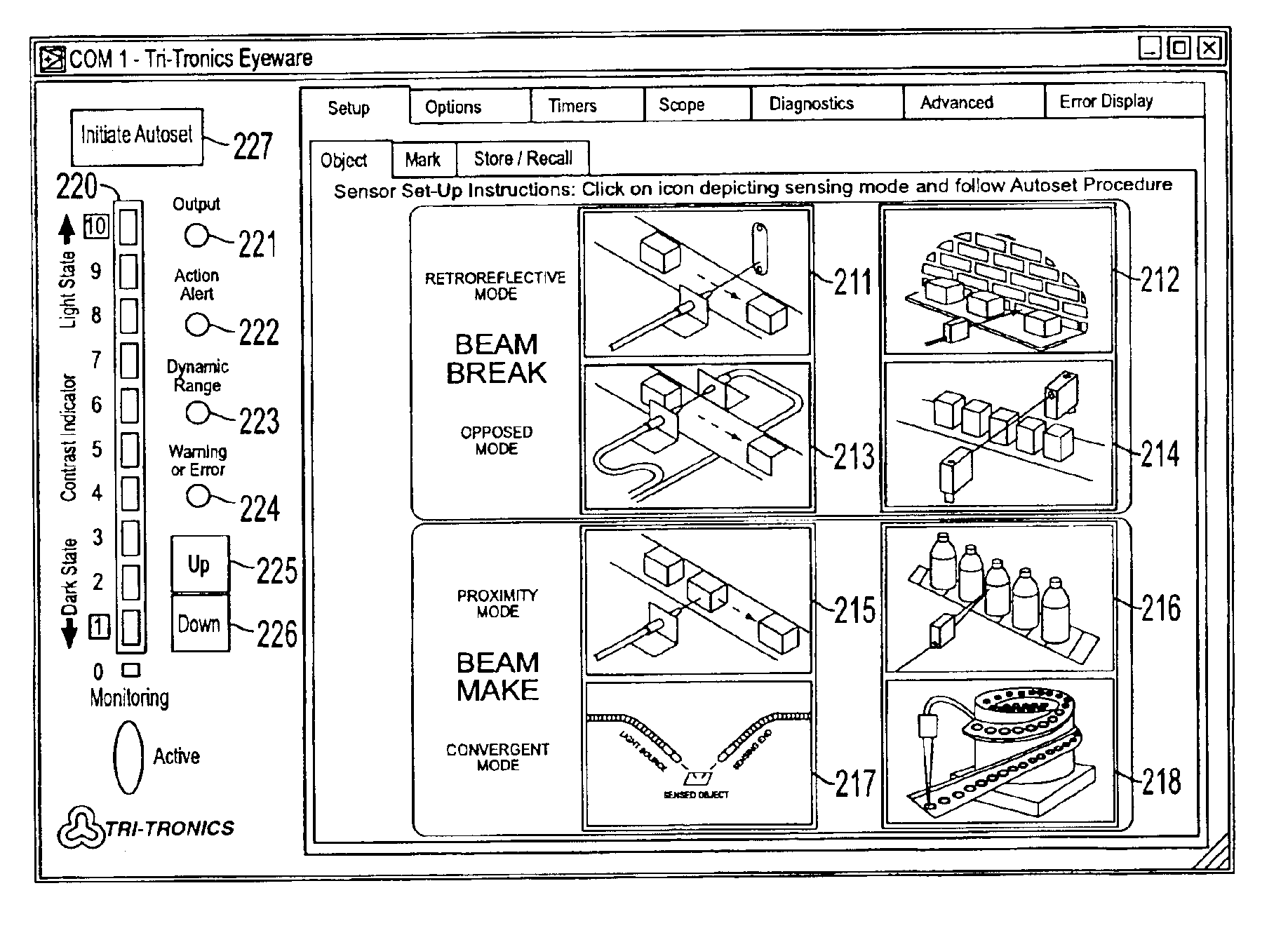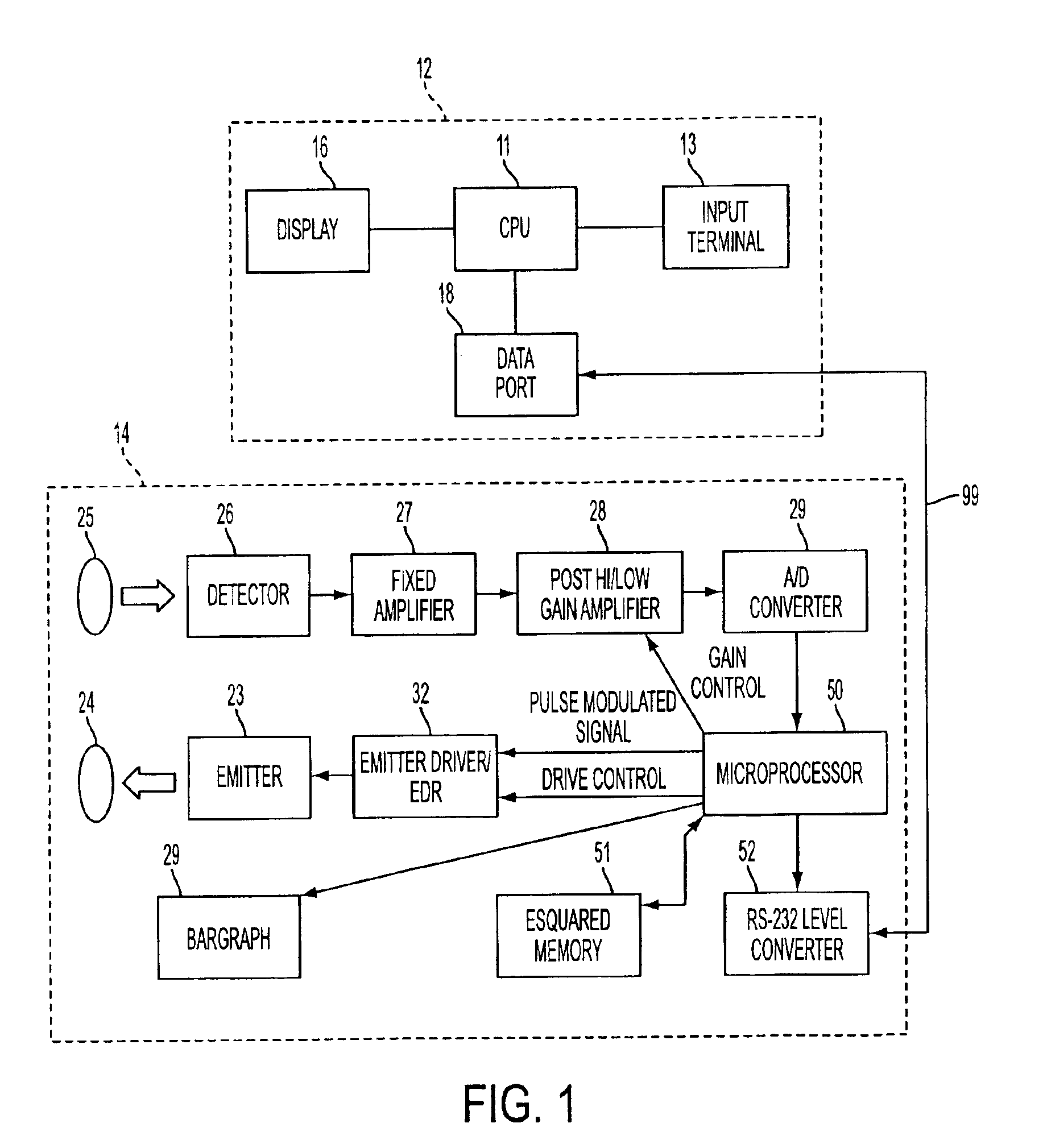Programmable photoelectric sensor and a system for adjusting the performance characteristics of the sensor
- Summary
- Abstract
- Description
- Claims
- Application Information
AI Technical Summary
Benefits of technology
Problems solved by technology
Method used
Image
Examples
Embodiment Construction
[0027]FIG. 1 illustrates an exemplary block diagram of the system of the present invention which includes a computer device 12 and the digitally controlled photoelectric sensor 14. Referring to FIG. 1, the computer device 12 includes a microprocessor / CPU 11, an operator input terminal 13 (e.g., keyboard, mouse, etc.), a display monitor 16 and a data port 18 capable of forwarding instructions / commands to the sensor 14, and receiving data from the sensor 14. In the exemplary embodiment of FIG. 1, the computer device communicates with the sensor via a serial data bus 99 employing the RS-232 standard. However, it should be noted that the present invention is not limited as such, and any other suitable communication link can be utilized.
[0028]Referring to the sensor 14, the sensor 14 comprises a variable current driver circuit 32 and an emitter light source 23, which is typically a light emitting diode (LED). A pulse modulated signal from a microprocessor 50 contained in the sensor is co...
PUM
 Login to View More
Login to View More Abstract
Description
Claims
Application Information
 Login to View More
Login to View More - Generate Ideas
- Intellectual Property
- Life Sciences
- Materials
- Tech Scout
- Unparalleled Data Quality
- Higher Quality Content
- 60% Fewer Hallucinations
Browse by: Latest US Patents, China's latest patents, Technical Efficacy Thesaurus, Application Domain, Technology Topic, Popular Technical Reports.
© 2025 PatSnap. All rights reserved.Legal|Privacy policy|Modern Slavery Act Transparency Statement|Sitemap|About US| Contact US: help@patsnap.com



